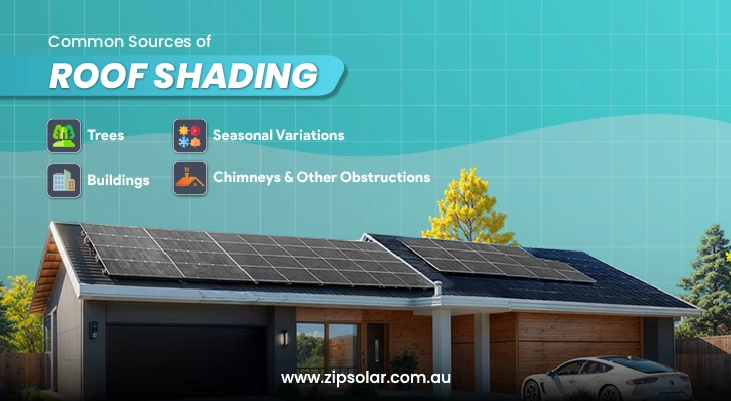Electricity prices in Australia continue to rise, and many households are seeking ways to reduce costs and remain i...
Oct 14, 2025
Aug 01, 2024
Understanding the impact of roof shading on solar panel performance is crucial for maximizing the efficiency of solar energy systems. Even minor solar panel shades can significantly reduce the energy output of solar panels, leading to lower savings and reduced environmental benefits.
This blog explores how shading affects solar panels, common sources of shading, and effective solutions to mitigate these issues.
Solar panels and shade have a complicated relationship. When shadows fall on solar panels, the obstructed cells produce less electricity, which can significantly impact the overall energy output.
The efficiency of solar panels decreases because shaded areas block the sunlight necessary for generating electricity. This shading effect can reduce energy production and cause a drop in performance, affecting the system's overall efficiency.

Several factors contribute to roof shading, including:
Solar panels and shade aren’t friends! The impact of solar panel shades on solar panels’ performance varies depending on whether the shading is partial or complete. Partial shading affects only some cells within the panel, while complete shading covers the entire panel.
Both types of shading can lead to a significant drop in energy production, but partial shading is more common and can be mitigated with appropriate solutions.
To address the issue of shading, consider the following solar panel shading solutions:
Proper placement of solar panels is crucial for minimizing shading. Here are some best practices:
At Zip Solar, we provide the best designing and installation solutions to help you avoid shading issues. Our expert team ensures optimal placement and uses advanced technologies to maximize your solar system's efficiency.
Conduct a site assessment to identify and address potential shading sources, and consider repositioning panels or using solar panel optimizers.
Shade can significantly reduce the efficiency of solar panels, with even minor shading leading to a substantial drop in energy production.
Shading blocks sunlight from reaching the cells, reducing the panel's ability to generate electricity and lowering overall efficiency.
While solar panels can still generate some electricity in shaded areas, their performance is significantly reduced compared to unshaded conditions. We recommend using our solar panel shading solutions
Solutions include repositioning panels, using solar panel optimizers, and employing technological solutions like micro-inverters and power optimizers.